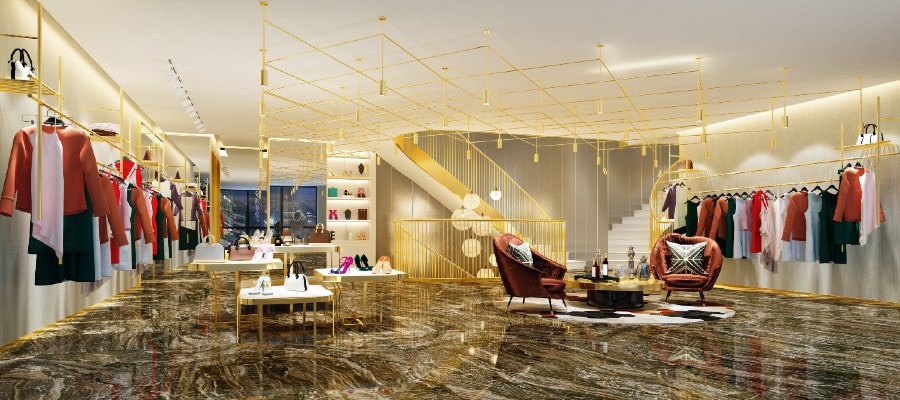Retail & Distribution
The Seamless Luxury Experience: Harmonizing the Experience Both In-Store and Online
27 January 2017
At the end of 2016, the French-American Chamber of Commerce (FACC-NY) invited more than 100 key luxury retail industry players to attend its panel, “The Seamless Luxury Experience: Harmonizing Events, Retail and Digital Strategies.” The panel was moderated by Robbin Mitchell, Partner and Managing Director at The Boston Consulting Group (BCG), and expert panelists were:
- Marie Audier D’Alessandris, Chief of Global and North America Marketing, Coach
- Thomas Serrano, President, Havas Luxe
- Amanda Knauer, Senior Manager, Brand Strategy and Implementation, Cadillac
- Djamel Toubrinet, Marketing Director, The Americas, Cegid
With the question, “How to create a uniform customer experience both in-store and online?” in mind, the panelists covered a variety of topics – from the evolving role of the brick-and-mortar store to leveraging cutting-edge technologies like virtual and augmented reality. Here’s a summary:
Mitchell opened by explaining that, according to research conducted by BCG, consumers anticipate spending 20-35% of their total shopping budget online in the next few years. The research also found that 60% of luxury sales are digitally influenced. Therefore, it’s evident that digital is happening, whether brands are ready for it or not.
Mitchell then introduced various questions surrounding this topic:
Question 1: Fact or Fiction? Digital is necessary for survival
Luxury brands must embrace the digital revolution and adopt a fully-integrated omnichannel strategy. Those who prioritize and execute it well, both internally and externally, will out-perform their competitors, leaving slow adopters lagging behind – losing followers, market share and their ability to adequately compete. Fact or Fiction?
The panel quickly agreed that this is a fact. “Single-channel retailing is a thing of the past […] you’re not going to make it in retail unless you’re omnichannel. Look at pure-play e-tailers opening physical stores,” stated Djamel Toubrinet of Cegid. Single-channel retailing has become obsolete due to the integration of technology into the shopping experience. Even pure-play e-tailers such as Amazon, Shop the Runway and Warby Parker understand that brick and mortar stores are essential to providing a completely connected retail experience. Convenience is a fluid concept, and an omnichannel strategy means customers have the largest range of options for researching, buying and returning.
Consumers purchasing luxury goods are the most digitally-empowered group, and the opportunities offered by mobile and social media have called for an elevated standard of brand experience, regardless of when, where or how the they choose to shop.
Question 2: Luxury Brands Are Slow to React
Is it because of the fear of losing exclusivity in favour of accessibility? Are there examples of winning strategies from within the luxury sector, or from non-luxury sectors that brands can learn from?
The panel shared the view that providing value without compromising on luxury will probably continue to be one of the key challenges for retailers in the luxury sector.
Luxury is a “high-touch” experience, said Thomas Serrano of Havas Luxe. That experience is precisely what is lost when you translate a meticulously designed and crafted real-life product into a flat image online. This is a major reason brands have taken so long to go online. “How do you make your $6,000 handbag look right?” he asked.
With about 90% of retail sales still happening in stores, luxury brands mistakenly believe that their customers are part of an older demographic group who tends to be mainly store-oriented. Amanda Knauer of Cadillac, stated that this has given retailers “an opportunity to lag.” But this is no longer the case, as there’s a shift in wealth from older to newer generations, who use the internet regularly and research products and compare prices on their mobile devices.
Question 3: How to invest in technology
How should brands be thinking strategically about their technology investment? What are the considerations around prioritizing, sequencing and approach? What guidance would you give companies who are just beginning to place a more serious emphasis on this area?
Panelist all agreed by saying that the ultimate goal of retailers isn’t to become omnichannel, but rather to eliminate friction from the customer experience by mapping out their customer journey.
By leveraging a single, centralized and real-time platform, luxury brands can provide a unified experience between channels, allowing shoppers to buy online and pickup in-store, turning stores into points of service and fulfillment hubs, and mobile-enabling store associates. In this way, consumers get a consistent brand experience both in-store and online.
Question 4: Importance of Digital vs Store
Is there a scenario where digital could become more important than the physical store, and where is the tipping point?
The panelists emphasized that in order to create the desired customer experience, one is not more important than the other. “The fastest way to increase in-stores sales is to grow your ecommerce sales. The fastest way to grow your ecommerce sales is to provide an elevated in-store customer experience. It’s not online vs. offline; it’s both together,” explained Toubrinet.
Real human interaction continues to be the cornerstone of the in-store experience, and this isn’t something that could ever be replaced by technology. Finding the best way for digital and in-store to work together is the key to success. According to D’Alessandris of Coach, “it’s really about the customer experience being consistent. What still matters the most is the experience, and experience is at the center of omnichannel.”
Question 5: Advice to the CEO
What piece of advice would you give a CEO who wants to accelerate the ability to connect the digital and physical touchpoints of the customer journey?
The panel responded by saying that the CEO should work with business and IT teams to determine the objectives for this initiative, and then invest in the right technology provider and consultant to facilitate the transition. They added that the CEO should be careful not to fall into the trap of legacy business processes, i.e. “we’ve always done it that way,” or traditional compensation plans for eCommerce and store operations teams, which tend to push both groups to constantly fight for consumers’ dollars, instead of coming together to create a seamless omnichannel experience.
The parting remarks of the panel echoed was what was said throughout the discussion: when it comes to creating a truly great customer experience, online and offline are not two separate entities. Instead, they feed off one another, each reliant on the other to stimulate growth and innovation.
Luxury retailers need to focus on investing in the technology necessary to create a single, real-time omnichannel strategy that will allow them to remain adaptable and competitive. The good news for luxury brands is that the internet allows them to collect data and connect with shoppers long before they step into the store. This way, brands can tailor offers and experiences to a specific shopper. This type of personalization has always been part of luxury, and will certainly not be changing anytime soon.


